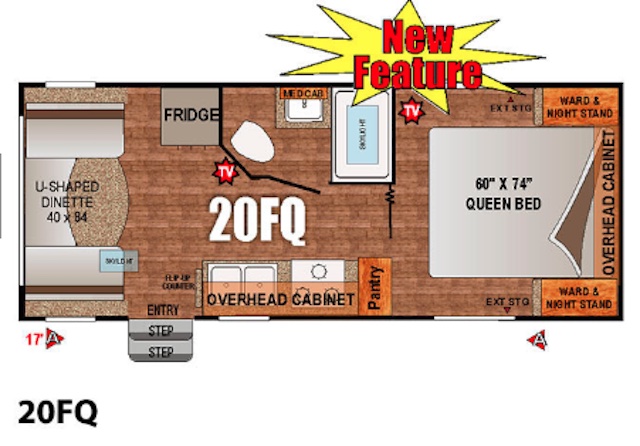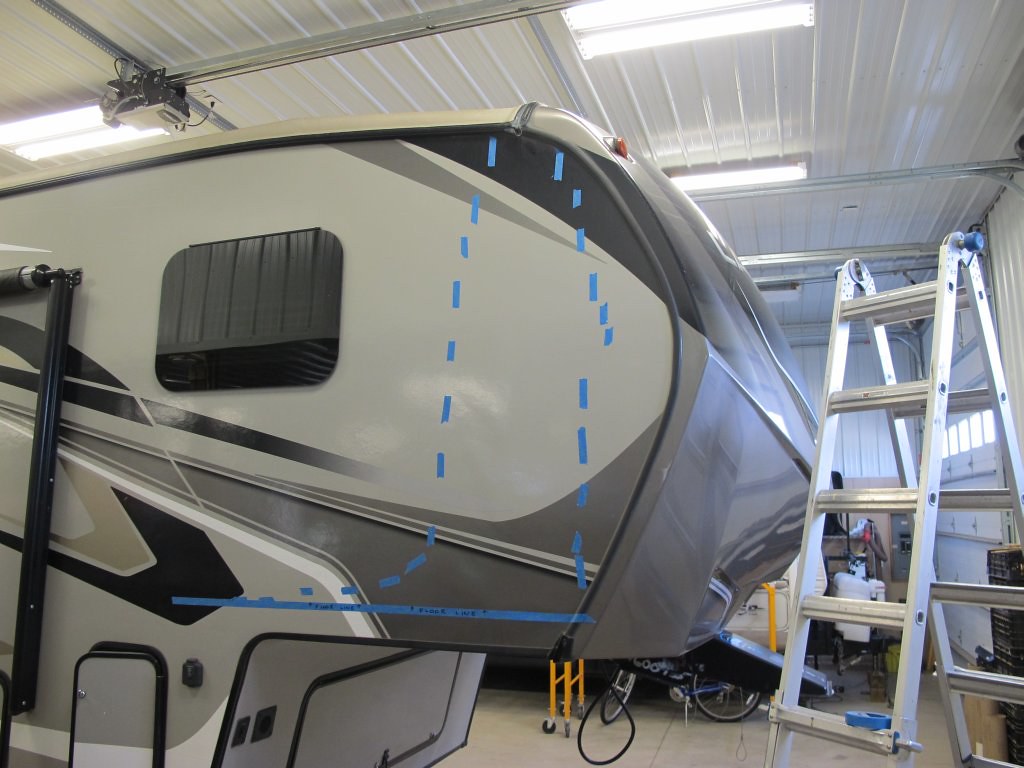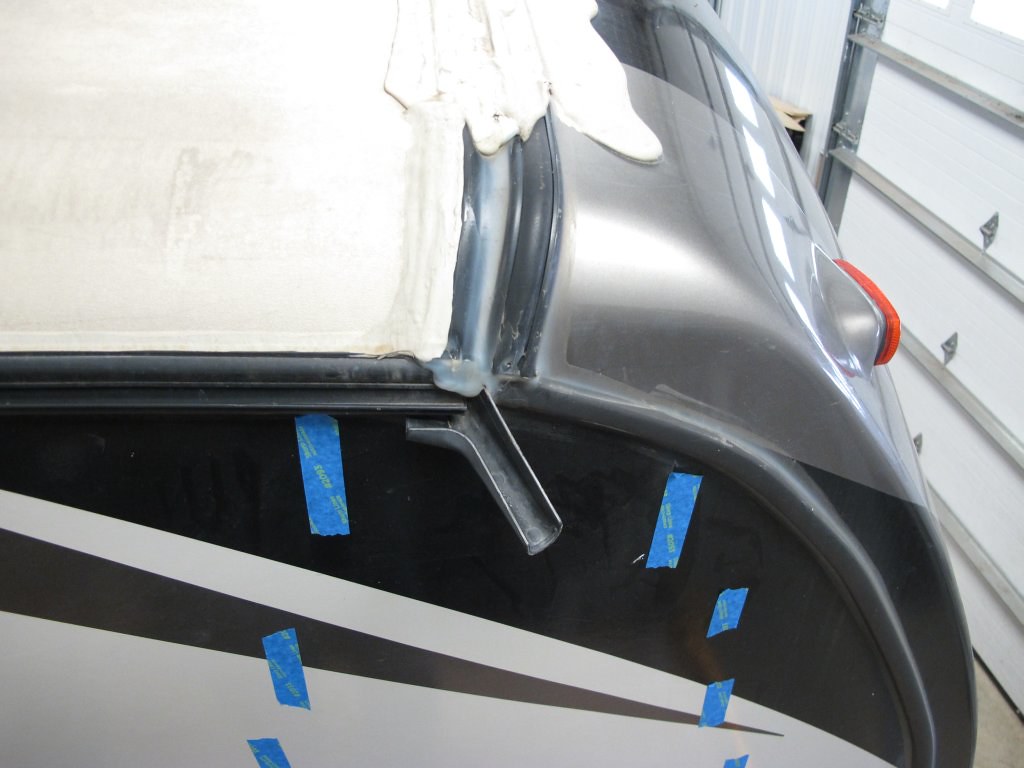Downwindtracker2 wrote:
I've got a problem, I can deal with the the rotten chipboard, simply replace with pressure treated plywood . But I think there is rot in the wall. Our TT is an early OutdoorRV, a 2012 build. It's a hybrid, standard stud walls with fiberglass coated hardboard . The bottom plate looks like I'll have to replace it. A stick and tin would be easy, peel the aluminum and splice in Douglas fir. How do you deal with that fiberglass hardboard ?
I would think they would have used construction adhesive ? At least they should have.
Hi,
I may be able to help, but I need more info and pics of what you are up against. I repair/restore older campers with water damage. When you say rotted chipboard, this sounds like floor rot. Yes/No? Unless you had a water piping leak from inside, floor rot comes from above the floor, walls or roof, or both.
A few suggestions before you tear into this if you have not already,
Figure out first where the water damage started, and there can be multiple places of leakage, not just one smoking gun. There may also be other water-infected areas in the camper beyond the floor you may not know about. The point is to figure out how big the problem is, where it started, and if there are other areas you do not know about which are infected.
Once you have inspected the entire camper, decide whether to fix it or if this problem is way too big beyond the current floor issue, you may consider other choices. If you decide to repair it, you know how far you must go to get all the leak sources that created the floor rot.
You can scan the inside and outside walls since you do not have the tin siding using a moisture meter to inspect for trapped moisture. You can scan the ceiling up from the inside, and if there is no large mold growth on the roof, scan the roof down. Pending how the bottom of the camper is made, if there is a Darco wrap (black cross-knit waterproof membrane), you can scan up looking into the basement for wet insulation. And if there is vinyl flooring, scan inside, looking down into the basement. It can scan carpet, too; it just cannot scan as deeply into the floor. The pinless meter I use can see 5/8" to 3/4" beyond the sensor, which is deep enough to find wet behind it. After using the meter on enough wet campers, sadly... it has never failed me to find water trapped behind it.
I tell my friends/clients to spend the $45 for the meter and scan the entire camper. Create a hand sketch, take a picture of each wall, etc., and write the moisture percentages on the sheet, showing how big or small that water area is. I can predict how big the job will be to do a total restore from that sketch. Then they determine what they want to do. It may take them on and off, a few days to do the scanning and sketches on and off, but they then know what better to expect going into this.
Before I get into the meter etc, let me know if this is even of any interest to you. The scanning is not hard to do, there is a small learning curve to know how to use it and how metal in the wall can create a false trip on the meter, but water damage is not a blip in the wall; it is a big area.
So far, the total restoration efforts I have done on older campers have taken 750 to 800 work hours for a total restoration. It takes someone who does not want a new camper, they love the one they have, and they know it. They just got caught up in water damage. Buying a new camper for big bucks now, that has lower quality than what they have, was not a good choice for them, it made more sense to fix the old one and camp with for the next 10 to 15 years. The restored camper will be better sealed up and less likely to leak, as the owner has learned how a camper can leak and how to stay on top of those seal areas. While you may not want to do a total restoration, you can at least stop other leaks you did not know about yet to buy more time using the camper.
A few other things, I suggest "not" to tear into the wall or ceiling from the inside; that is your last ditch effort and only if the wallboard is 100% gone. There are ways to restore partly water-damaged wallboard if it is not totally toast. And there are ways to splice into it from the inside and make a repair that sometimes blends in well. And there are ways to rebond delaminated FRP panels from the outside if that type of repair makes sense in your case.
You mentioned using pressure-treated wood; I know that may sound good, but it is not always a great idea. There are fastener corrosion issues, increased costs, and it does not stop the leak source. Spend the extra money on better ways the seal the camper to stop the leak in the first place.
The inside 1/8" luan wallboard is structural. These campers are not built like a house; the sum of all the parts creates rigidity. While the wall studs take the vertical loads, the wallboard creates the rigidity of the wall section, as does the ceiling board for the roof. A studded camper wall without any glued and stapled 1/8" inside luan wallboard will flex all over the place. The wallboard creates rigidity before the siding is put on to help increase the strength. That said, small pieces of wallboard being removed and replaced can recreate lost rotted wall rigidity; you do not have to replace the entire sheet in some cases. While you have FRP side walls on 1/4" luan exterior walls, stick and tin campers do not, and the wallboard is the major rigidity member.
Post pics of the outside and give us a floor plan etc, of where the floor rot is. Some tricks can help pending on the area near it. I need more info to help better.
If you want to keep your camper, it is fixable and practical if you can do the work yourself. The work hours will be high, but it is a lot less $$$ than starting over with new current-day campers. I know, lots of things to think about.
I hope this helps,
John


